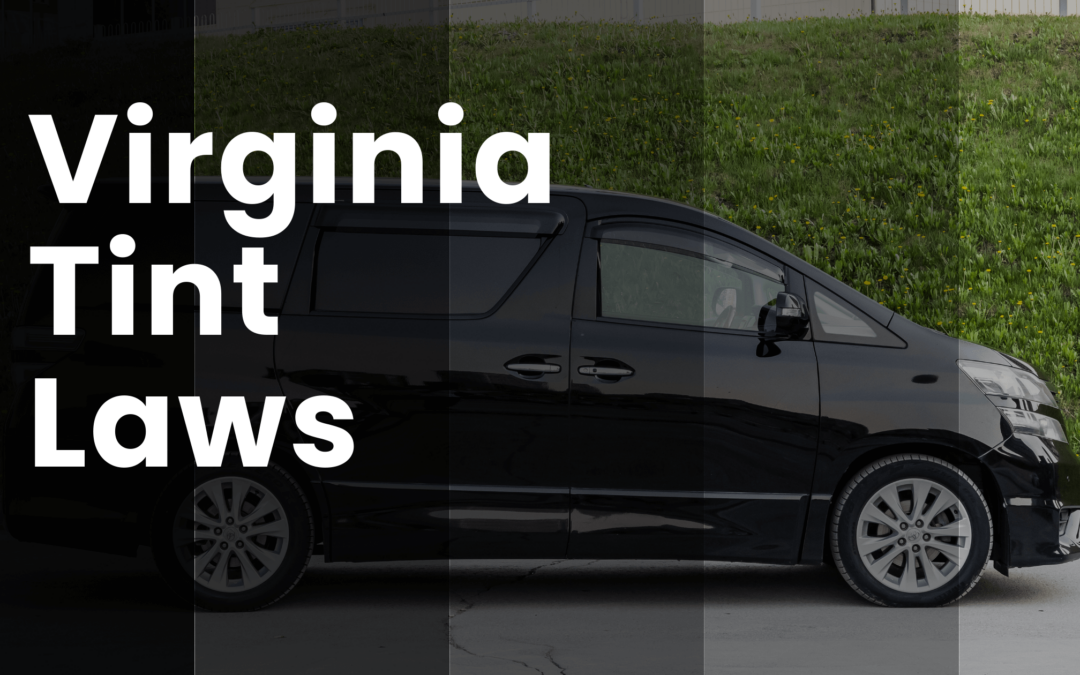Virginia’s Window Tinting Laws
Virginia’s car window tinting laws made their debut in 1999, and we’re here to furnish you with a comprehensive understanding of these regulations. Our mission is to provide a detailed insight into key facets such as permissible tint darkness, reflection standards, and additional guidelines that pertain to window tinting in the state.
Disclaimer
While I have a background in commercial law and strive to provide accurate and informative content, it’s important to note that I am not a legal expert. The information presented in this blog is based on my interpretation of the subject matter, and laws can vary by location and change over time. It is strongly recommended that readers verify all sources of information and consult with legal professionals or relevant authorities before making any decisions related to tint laws.
Understanding the Terminology Regarding Tint Laws
The most important part of the legislation is understanding what VLT is and how law enforcement services check or test the percentage.
What is VLT
VLT, or Visible Light Transmission, is a measure of the amount of visible light that can pass through a window tint or film. It is commonly used to determine the darkness or opacity of window tints, and it’s an important factor in window tinting laws and regulations.
VLT is typically expressed as a percentage. For example, a window tint with a VLT of 20% allows only 20% of visible light to pass through, making it relatively dark and less transparent. Conversely, a window tint with a VLT of 70% allows 70% of visible light to pass through and is much lighter and more transparent.
How do Law Enforcement services test the VLT percentage?
Window tinting laws vary by jurisdiction, and they often specify the maximum allowable VLT for different types of windows on a vehicle, such as the front windshield, front side windows, rear side windows, and rear window. These laws are designed to ensure that drivers have adequate visibility and that law enforcement can see into vehicles for safety and identification purposes. The manner that they go about testing the VLT is by using a VLT gauge/meter.
Here is a YouTube Short from @TrafficServices and @TorontoPolice showcasing the device and how it works. Even though it is in Canada, it still is helpful to understand how the tint darkness is measured.
Window Tint Darkness in Virginia:
The measure of visible light allowed through your car windows is designated as VLT (Visible Light Transmission). Virginia’s laws outline precise VLT percentages for various vehicle types, distinguishing between sedans and SUVs or vans.
Virginia Car Tint Law for Sedans:
- Windshield: Non-reflective tint is allowed above the manufacturer’s AS-1 line (or top 5 inches).
- Front Side windows: Must permit more than 50% of light to penetrate.
- Back Side windows: Must allow more than 35% of light to filter through.
- Rear Window: Must allow more than 35% of light to filter through.
Tint Law For SUVs and Vans in Virginia:
- Windshield: Non-reflective tint is allowed above the manufacturer’s AS-1 line.
- Front Side windows: Must allow more than 50% of light to penetrate.
- Back Side windows: Any level of darkness is acceptable.
- Rear Window: Any level of darkness is acceptable.
| Type of Window | Sedans | SUVs/Vans |
|---|---|---|
| Windshield | Non-reflective tint above AS-1 line (or top 5 inches) | Non-reflective tint above AS-1 line |
| Front Side Windows | Must permit more than 50% of light | Must permit more than 50% of light |
| Back Side Windows | Must allow more than 35% of light | Any level of darkness is acceptable |
| Rear Window | Must allow more than 35% of light | Any level of darkness is acceptable |
Special provisions
Special provisions come into play when medical exemptions are involved. Windshields can have 35% VLT on the top 5 inches (AS-1 line) or 70% VLT across the entire windshield. Front side windows may have up to 35% VLT.
Window Tint Reflection in Virginia:
Window tinting can serve to reflect incoming light, diminishing glare and heat. Virginia’s tint law specifies permissible levels of window reflection when using tint, with particular requirements.
Reflectivity laws For both sedans and SUVs/vans:
- Front Side windows: Must not exceed 20% reflectivity.
- Back Side windows: Must not exceed 20% reflectivity.
Other Virginia Window Tint Rules and Regulations:
In addition to tint darkness and reflection specifications, Virginia features several other notable regulations related to window tinting:
Side Mirrors
Dual side mirrors are obligatory in Virginia if any window is tinted.
Restricted Colors
Red, yellow, and amber window tints are prohibited.
Tint Variance
A 7% variance in tint is permissible.
Certificates
Film manufacturers are not obligated to certify the film they sell in Virginia.
Stickers
The requirement for stickers is stated but unspecified.
Medical Exceptions
Virginia permits medical exemptions for specialized tint.
Regulations for Out-of-State Drivers
The same regulations apply to out-of-state drivers as those for drivers living in the State.
If you are from States such as North Carolina, Tennessee, Kentucky, West Virginia, and Maryland, you are expected to abide by these laws and regulations.
Penalties
Initial violations of tinting laws are classified as Class 3 misdemeanors, with subsequent offenses considered Class 2 misdemeanors.
It’s essential to acknowledge that interpretations of Virginia’s tinting laws and regulations may vary based on your county or place of residence. To ensure full compliance, we strongly recommend validating this information with your local DMV or law enforcement authorities.
Our information concerning window tint laws in Virginia was last updated in 2023. We take pride in being a reliable industry leader, dedicated to providing accurate and current information about window tint laws. Should you encounter any inaccuracies or outdated data, please don’t hesitate to reach out. Your trust in our resources is of paramount importance, and we are steadfast in delivering the most reliable information available.

